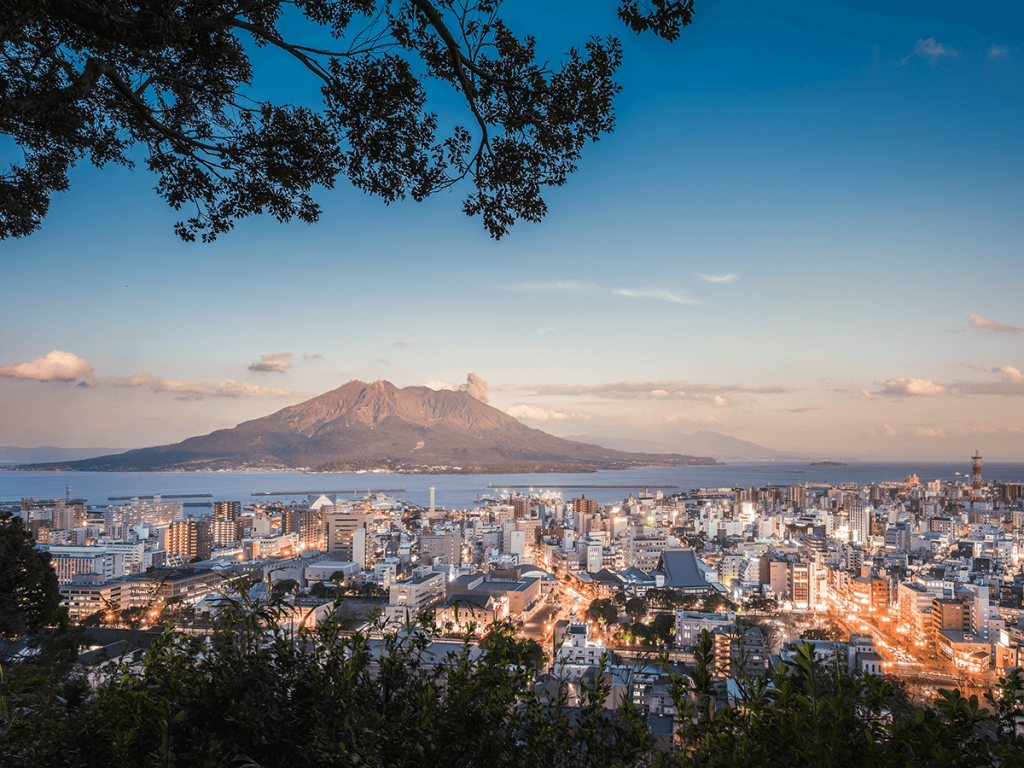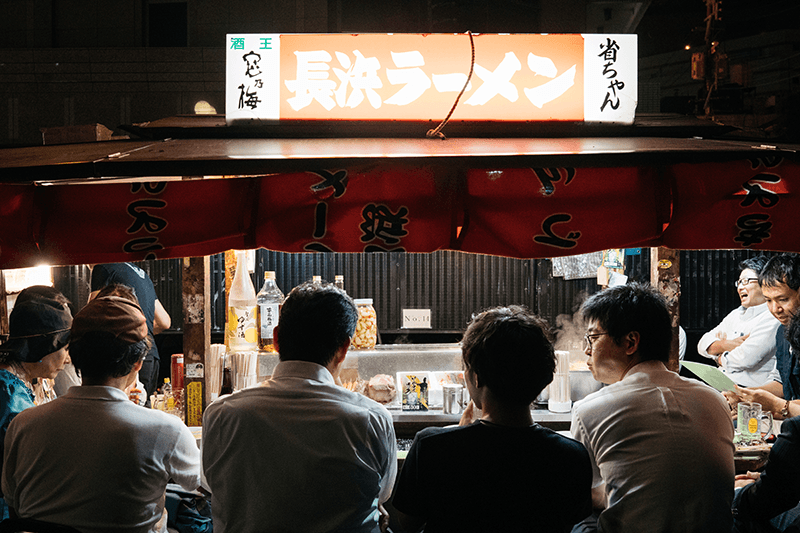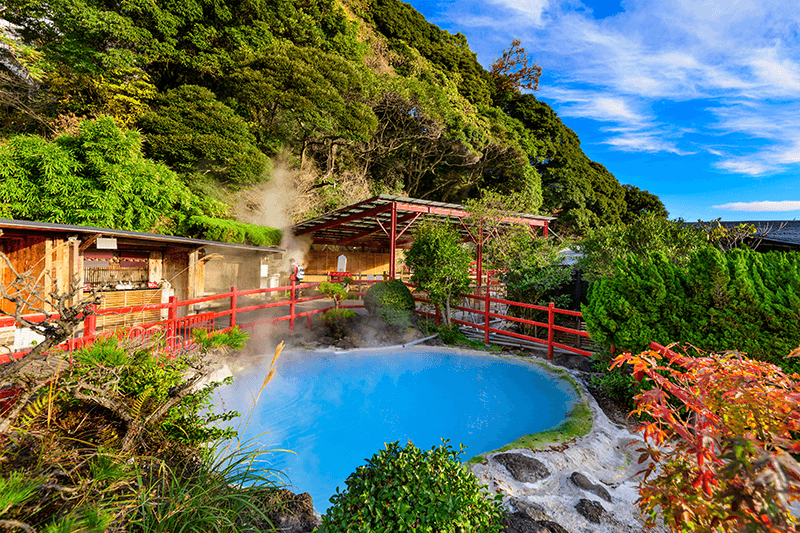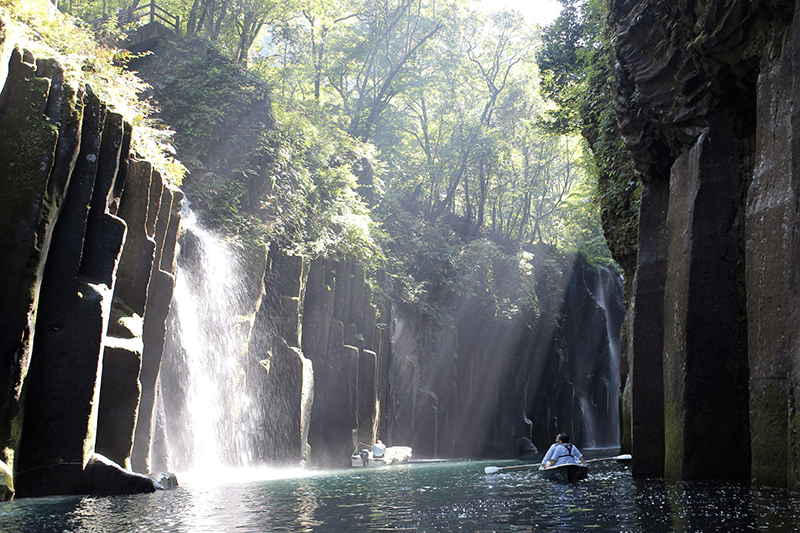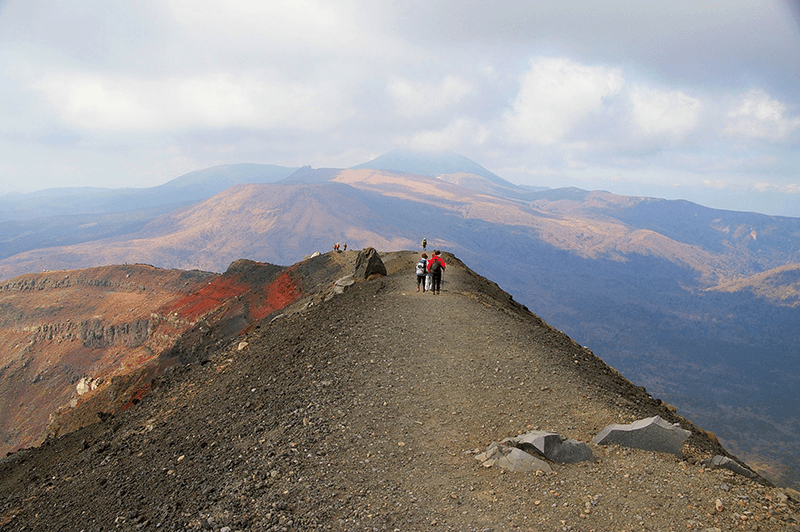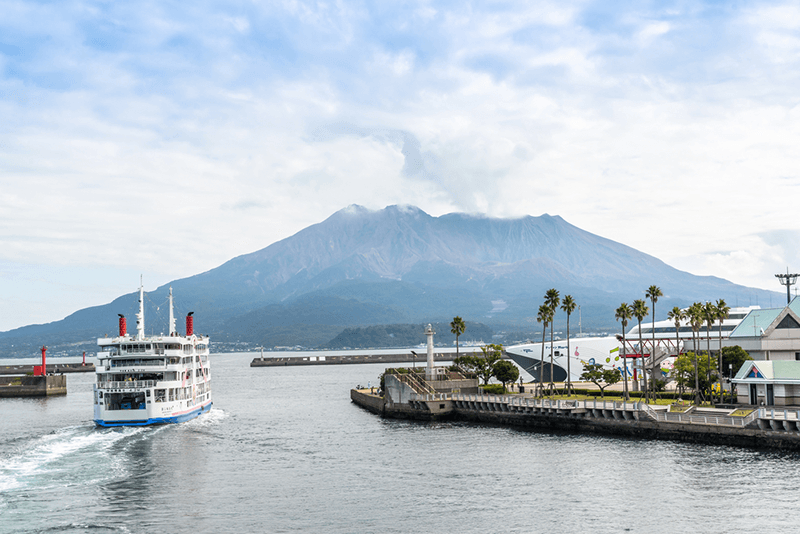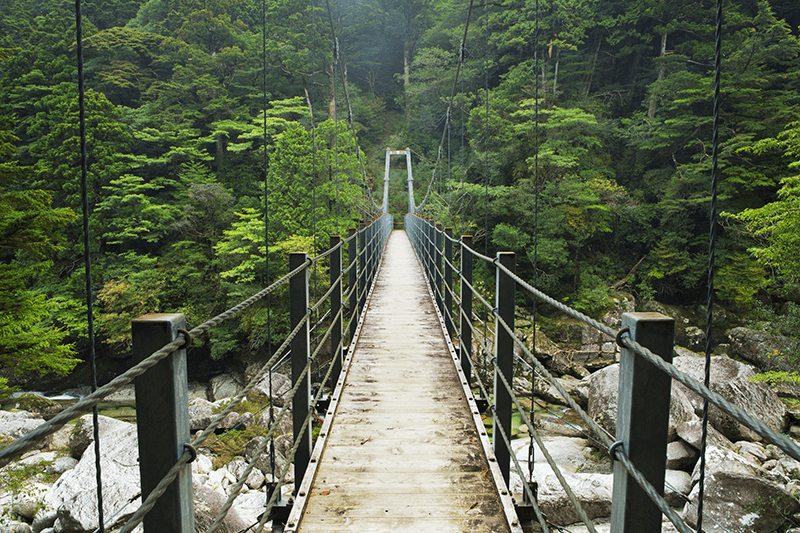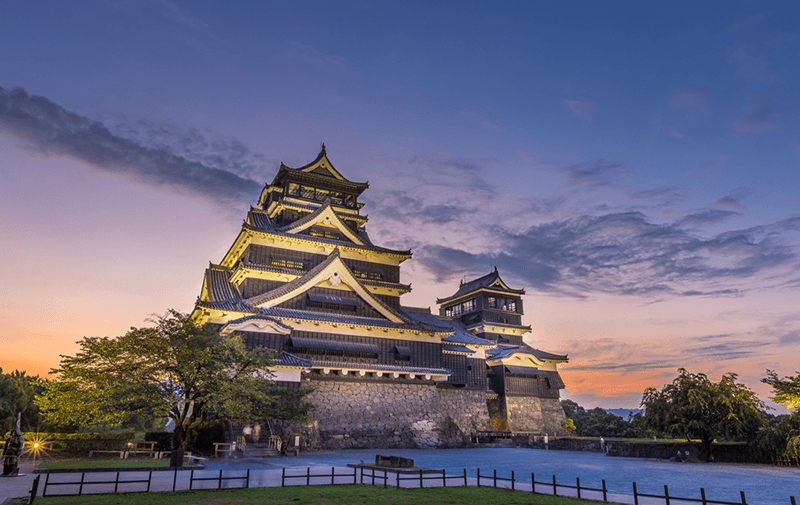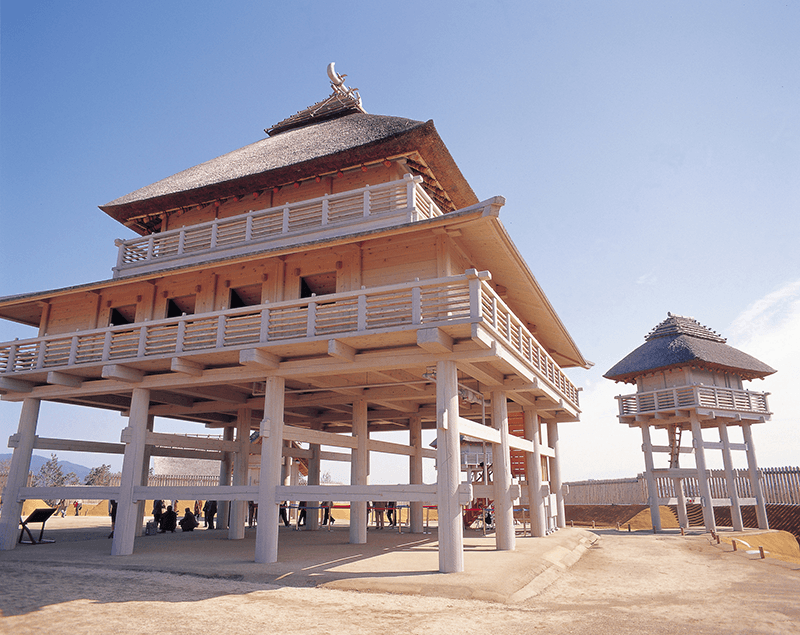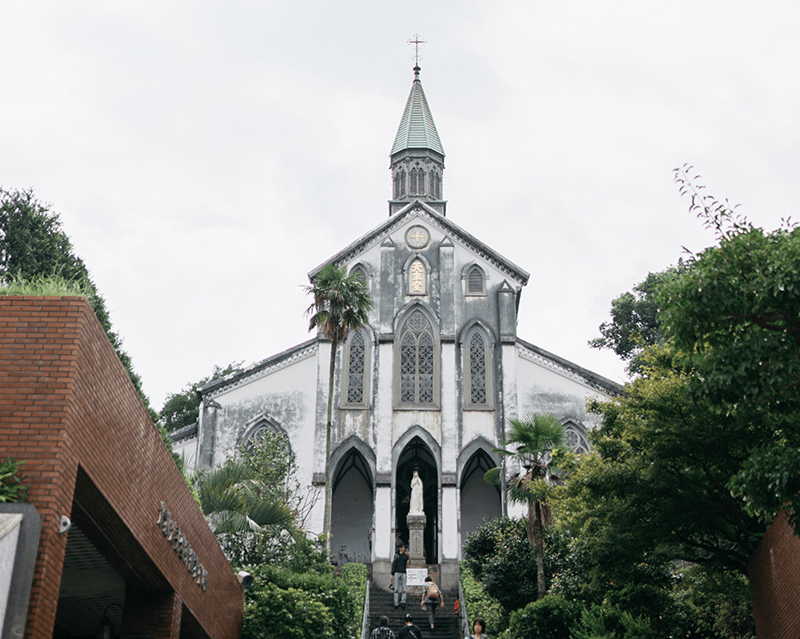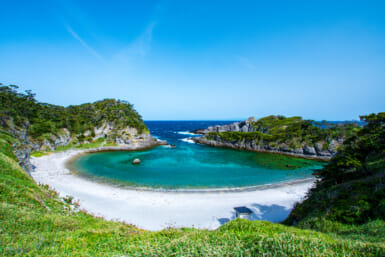We’ve created four trips to suit four types – pick your favorite or combine them all into one big Kyushu adventure. Like what you see? Then find even more things to do in one of Kyushu’s prettiest prefectures in our features about Saga: “6 Ways to Enjoy Fall in Kyushu’s Saga Prefecture” and “48 Hours in Saga.”
Trip 1: For City Foodies & Onsen Lovers – Fukuoka and Oita Prefecture
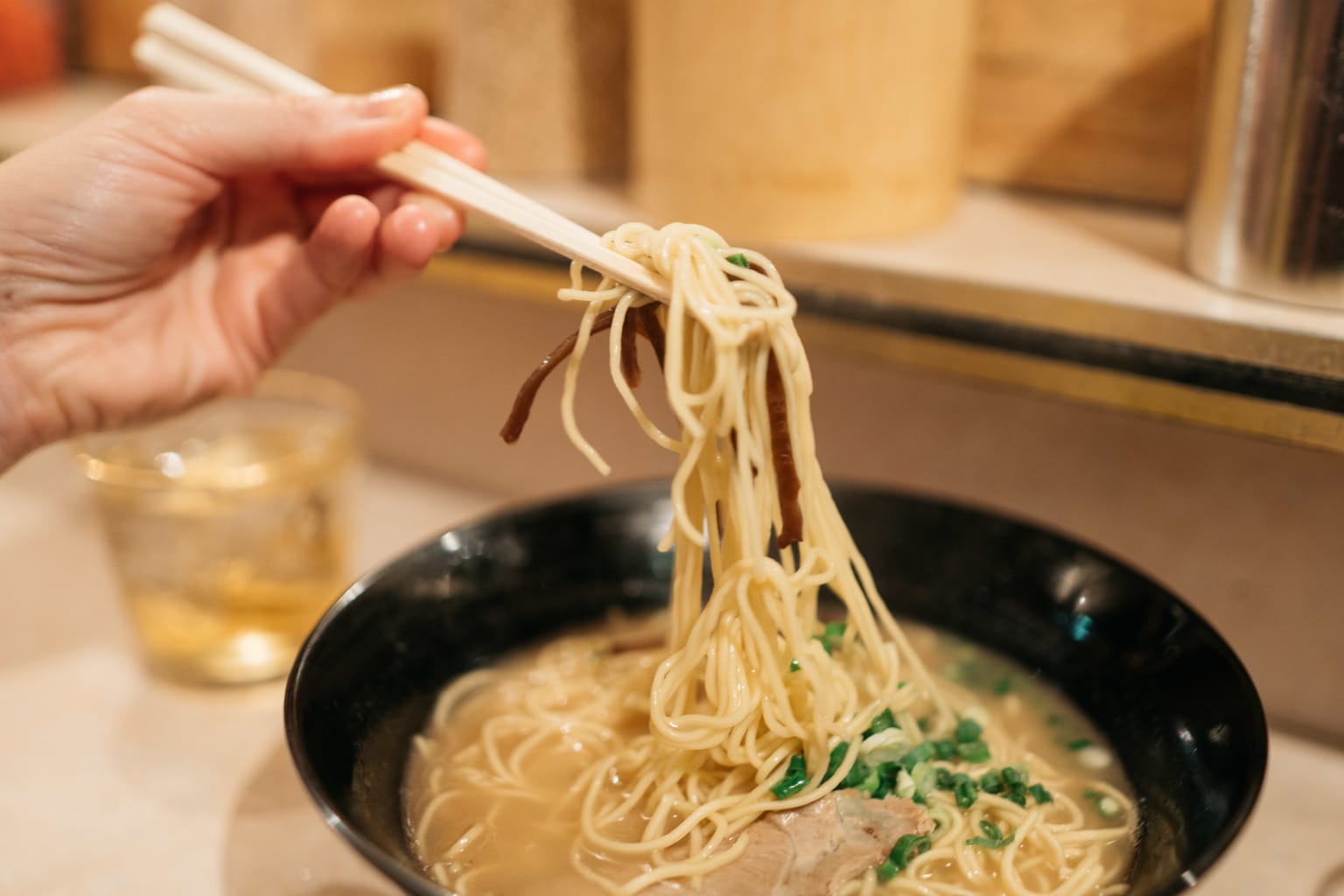
Ramen at the yatai stalls. Photo by Robert Kirsch
Day 1: Fukuoka’s Nightlife and Ramen
Kyushu’s largest city, Fukuoka has skyscraper energy but is friendlier than Tokyo and offers escape in the form of green spaces and even beaches. It’s known for nightlife and ramen, but it also has plenty for shoppers, art lovers and culture hunters. Hipsters should head straight for the Daimyo district, where you’ll find vintage stores and streetside cafés. When we visited, we only had eyes for Hakata ramen – which is often cited as the best tonkotsu (pork bone broth) ramen in Japan – so we made a beeline for the city’s yatai (street-side food stalls) that come alive at night just next to the river in Nakasu. Packed with casual diners every evening, this is the ideal spot to chat to locals while slurping up noodles and sipping on sake or shochu. Also try the udon, which has its origins in Fukuoka, and motsu nabe if you’re feeling adventurous (motsu means “innards”) .
How to Get There: Flights from Tokyo take approximately two hours, while the Tokaido or Sanyo Shinkansen can get you from Tokyo to Hakata Station in about five hours.
Where to Stay: Urbanites will love the modern rooms at First Cabin Hakata. Think of it as a luxury capsule hotel, and book the Premium Class Cabin for a comfy double bed and wooden finishings. (www.first-cabin.jp)
Day 2: Oita’s Beppu Onsen
After a night on the town in Hakata, best thing for you is a day spent dipping in and out of onsen. Oita Prefecture is home to Beppu, the famous onsen town where the springs are so hot that the city itself looks like it’s perpetually steaming. There are eight onsen areas in the city, but the most exciting hot springs are grouped together in the Kannawa area under the name The 7 Hells of Beppu. These are for viewing, not soaking, and include the cobalt-blue Umi-jigoku (sea hell) and the red clay-colored Chi-no-ike-jigoku (blood pond hell). To see them all, take the Beppu Jigoku Meguri (Hell Tour) from Beppu Station (¥3,650, 2.5 hours). For bathing, visit Takegawara Onsen, which opened in 1879 and is the oldest onsen in Beppu. Also be sure to try a beach sand bath at Beppu Kaihin Suna-yu, which is a five-minute walk from Beppu Daigaku Station.
How to Get There: From Hakata to Beppu Station, it takes approximately 2 hours on JR Kyushu’s Limited Express Sonic.
Where to Stay: Balance out your Fukuoka capsule confinement with a luxurious stay at Beppu Sennari Ryokan. (beppu-sennari.com)
Trip 2: For Fantasy Fans & Nature Enthusiasts – Miyazaki Prefecture
Day 1: Takachiho Gorge, Aoshima Beach & Udo Shrine
Miyazaki’s nature and spiritual spots bowled us over. To recreate our pilgrimage, make your first destination Takachiho, home to shrines related to sun goddess Amaterasu, and Takachiho Gorge, a chasm created by the flow of a river through volcanic rock. Either walk a trail that runs alongside the gorge or rent a boat and row down it. Next, take a bus to Aoshima. No, this isn’t the Aoshima full of cats – that’s the one in Ehime – but this Aoshima features a beach, botanic gardens, and a shrine set under a jungle canopy. Swing by Aoshima Beach Park (open spring through summer), a hip pop-up eatery collective, but don’t forget the mom-and-pop food stands (try the nikumakionigiri, rice balls wrapped in meat). Finally, take a bus to Udo Shrine. A 20-minute walk from the closest bus stop, Udo is inside a cave that faces the ocean, and will make you feel like you’ve reached the shrine at the end of the world.
How to Get There Takachiho is located between Oita, Miyazaki and Kumamoto, and can be reached via bus from each city. Aoshima and Udo lie just south of Miyazaki; both can be reached on the same bus line, which runs about once per hour.
Where to Stay To visit all three, make your base Miyazaki. If beach-going is your main goal, there are several hotel and guesthouse options right in Aoshima.
Day 2: Kirishima
The Kirishima mountain range is an important spot in Japanese folklore and great for hiking. The range includes active volcanoes and is said to be where Ninigi-no-Mikoto, grandson of goddess Amaterasu, descended to earth (though Miyazaki’s Takachiho makes the same claim). Regardless, Kirishima Shrine, devoted to Ninigi-no-Mikoto, is an impressive complex (be sure to try the hoko mochi cinnamon sweets). From the shrine, make your way to the Takachiho-gawara Visitor’s Center, from where you can embark on one of several hikes. Kirishima is famous for its crater lakes, but volcanic activity means the trails are often off-limits, so check in with the Visitor’s Center first. One of the safest bets is the hike to Mount Takachiho-no-mine, said to be the spot where Ninigi-no-Mikoto descended.
How to Get There: Kirishima is roughly equidistant from Kagoshima and Miyazaki. From either city, jump on the dark grey JR Kyushu’s Limited Express Kirishima train that looks like it was designed by Darth Vader and enjoy some incredible scenery.
Where to Stay: Shinyu Onsen Ryokan (tel: 099-578-2255) for its milky-white, sulfur baths, or Kirishima Hotel (www.kirishima-hotel.jp) for a Western-style facility.
Trip 3: For Adventure Seekers – Kagoshima Prefecture
Day 1: Sakurajima Volcano
As we stepped off the train at Kagoshima, it took us a moment to realize why there was a tinge of smoke in the air – then we remembered our destination, Sakurajima, is an active volcano. Erupting (harmlessly) hundreds of times a year, Sakurajima is one of Kyushu’s most unique destinations, with volcano-related attractions like a hot spring filled with dark, volcanic mineral-infused water. Skeptical? Give it a try at the free footbaths, where you can take in a view of the city and volcano across the bay. To get closer to said volcano, hop on a local bus (one leaves every hour for the volcano) or the Island View Bus – this bus only covers a portion of the island, so travelers interested in farther-flung sights, such as a shrine gate almost buried by an eruption in 1914, should rent a car or bicycle. Hungry? Thanks to its nutrient-rich volcanic soil, Sakurajima boasts record-sized daikon and delicious miniature mikan oranges.
How to Get There: If you’re coming from Kirishima (Trip 2), then take JR Kyushu’s Limited Express Kirishima from Kirishima Jingu Station to Kagoshima-Chuo Station (about 30 minutes). Sakurajima is a 15-minute ferry ride from Kagoshima city. Cyclists can ride from Kirishima – the 70km course takes you by an art museum, a kurozu black vinegar factory, volcano observation points and more.
Where to Stay: Ferries run 24/7, so travelers can easily stay on mainland Kagoshima – but those looking to stay on the island itself should check out hotel Rainbow (www.qkamura-s.com/sakurajima), which has a hot spring. If you’re on a budget, peek the Sakurajima Youth Hostel.
Day 2: Yakushima Island
Studio Ghibli’s 1997 epic Princess Mononoke takes place in a forest so lush and out of this world we’d always assumed it came straight from director Hayao Miyazaki’s imagination. As it turns out, Mononoke’s forest had a real-life model – the island of Yakushima, south of Kagoshima. For fans of that film – or nature enthusiasts in general – Yakushima’s biggest draw will be Shiratani Unsuikyo, a relatively easily accessible nature park filled with hiking trails and footpaths. Look out for the forest’s yakusugi cedar trees, some of which are literally thousands of years old. Aside from its special brand of trees, Yakushima also has yaku monkeys and yaku deer, both of which are smaller than their mainland brethren, and can be regularly spotted while walking the forests. Said forests aren’t Yakushima’s only attraction, though: the island also features activities like snorkeling, scuba diving and paddleboarding. Whatever you do, pack a raincoat: Yakushima is famed for its high levels of precipitation.
How to Get There: Getting to Yakushima is part of the adventure. The island has its own airport, but we recommend grabbing the high-speed jetfoil from Kagoshima (how often, after all, do you get to ride on something called a “jetfoil”?). The journey takes between two and three hours and costs ¥15,000 for a round-trip.
Where to Stay: Yakushima features a number of hotels, guesthouses and rentable cottages, many of which are near the jetfoil port. Blow all your money just getting here? Try out one of the island’s six mountain huts, which are entirely free, as long as you arrive early enough to snag a spot.
Trip 4: For History Buffs – Kumamoto, Saga, Nagasaki Prefecture
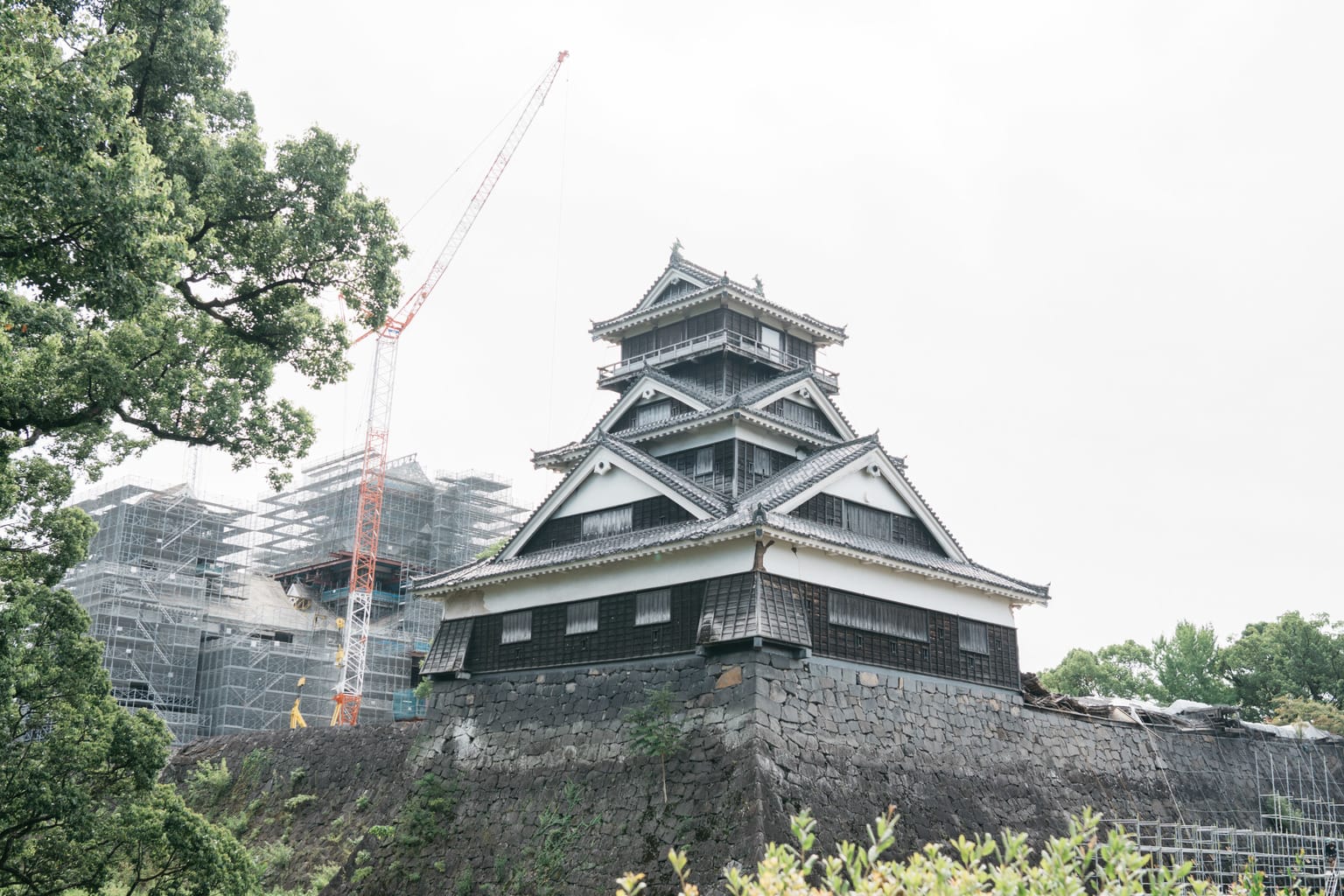
Kumamoto Castle under construction in 2017. Photo by Robert Kirsch
Day 1: Kumamoto Castle
Although you’ll be missing out on actually seeing its impressive facade, which is covered in scaffolding as they rebuild after the 2016 Kumamoto earthquakes, now is an enlightening time to visit Kumamoto Castle. It’s one of the few places in Japan that you can currently examine the extensive damage and restoration efforts necessary after an earthquake hits such a historically important structure. Built in 1607, the castle is scheduled to reopen to the public in early 2019, but the entire recovery process is expected to take two decades, mainly because consideration must be taken to maintain the traditional structure – for example, every stone that fell from the massive walls during the earthquake must be put back into its original position. When we visited, we were entranced by the watchtower alone, which stands tall and proud and largely intact. We were also astounded by one huge stone on display, which was discovered after the earthquake and features an ancient stone carving of a Bodhisattva figure.
How to Get There: You can fly from Tokyo to Kumamoto in about
two hours, but if you’re traveling from Kagoshima (following on from Trip 3), then take the Kyushu Shinkansen from Kagoshima-Chuo Station to Kumamoto Station (about one hour).
Where to Stay: Since Day 2 of our History Buff trip starts with a relatively long journey, we’d recommend getting part of the train ride under your belt by staying at Satsuki Besso ryokan, which is about 30 minutes out of the city towards Saga Prefecture. Take the Kyushu Shinkansen from Kumamoto Station to Shin-Tamana Station, and then walk for 25 minutes or hop in a taxi.
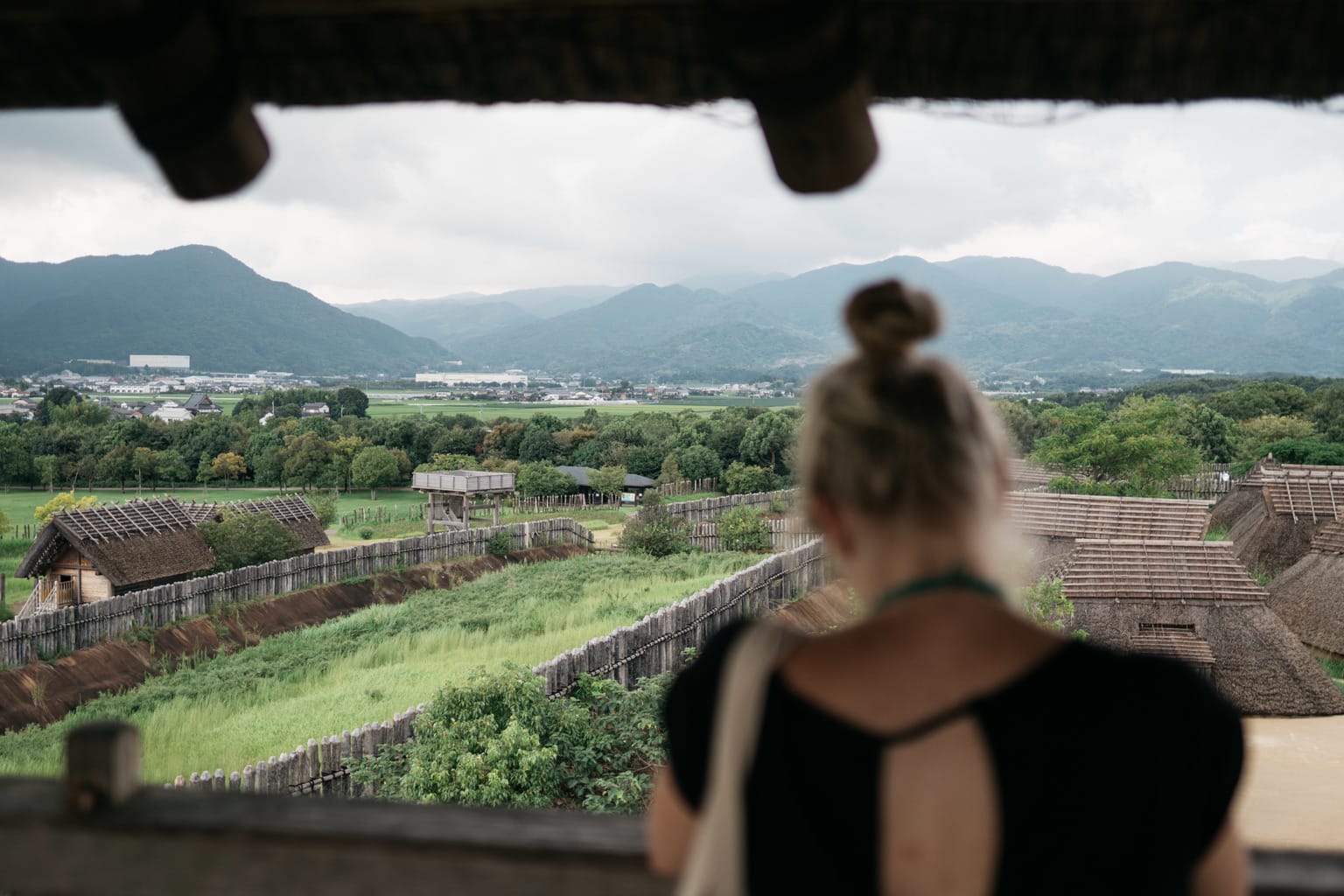
Yoshinogari Historical Park. Photo by Robert Kirsch
Day 2: Saga’s Yoshinogari Historical Park
There’s plenty to do and see in Saga Prefecture, but for some fascinating insight into one of Japan’s oldest periods, we recommend visiting Yoshinogari Historical Park (www.yoshinogari.jp/en). This archeological site features ancient ruins of a king’s village dating back to the Yayoi period (300BCE-300ACE), with reconstructed huts showing how people lived and the clothes they wore. Aside from simply trying to imagine what it must have been like to live in that era, the most intriguing part of our visit was inspecting the excavated burial jars and the various artifacts that were found inside them such as bronze swords and glass jewelry.
How to Get There: If you stayed at Satsuki Besso ryokan as recommended for Day 1, then take the Kyushu Shinkansen from Shin-Tamana Station to Shin-Tosu Station (about 25 minutes). Change to the JR Nagasaki Line and travel for 10 minutes to Yoshinogari-Koen Station.
Where to Stay: End your day in Saga’s famous Ureshino onsen town. We stayed at Warakuen (www.warakuen.co.jp/english.html), which has a unique “tea hot spring.” To get here, take the JR Kyushu Nagasaki Line from Yoshinogari-Koen Station to Hizen-Kashima Station, and then a short taxi ride.
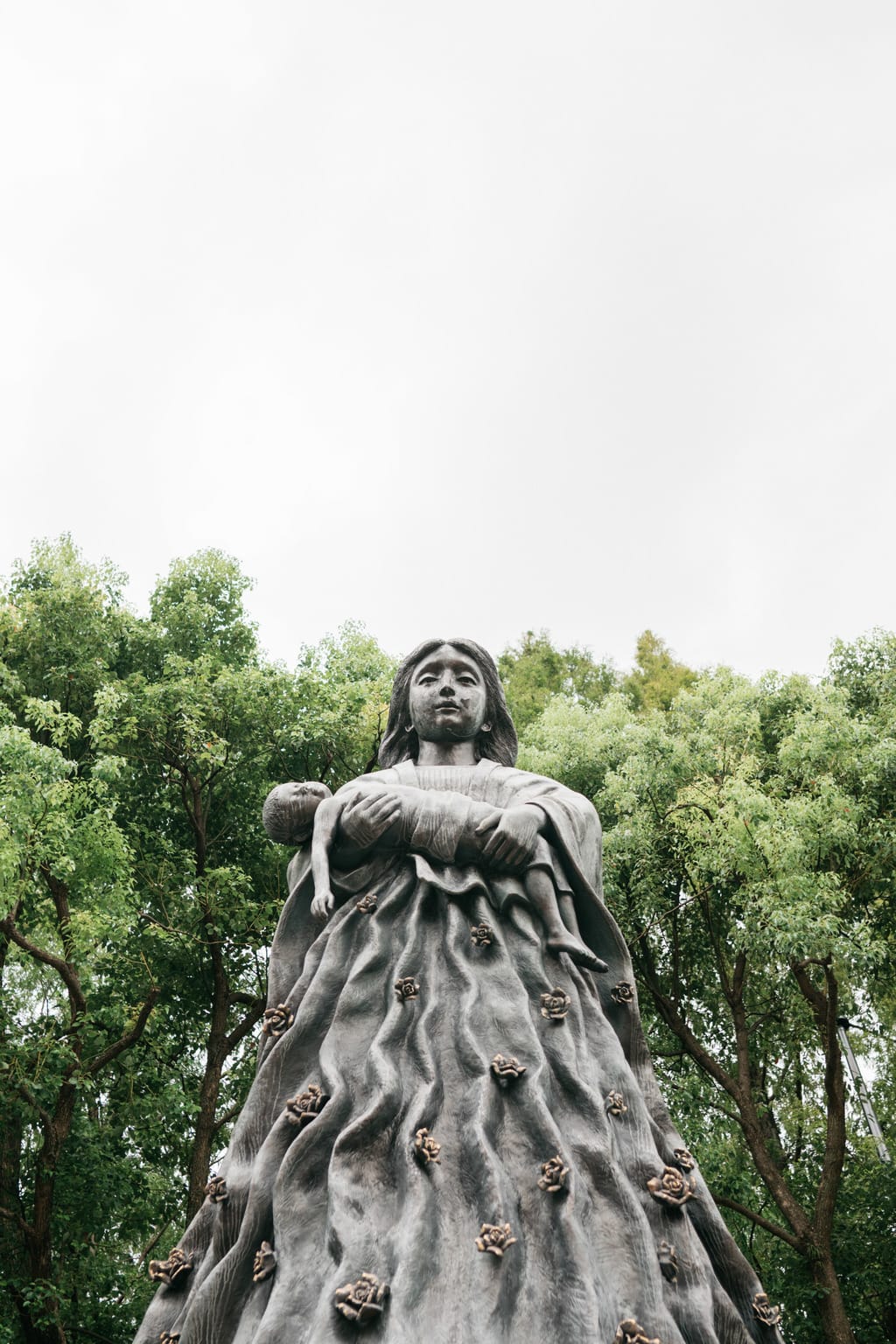
Nagasaki Peace Park. Photo by Robert Kirsch
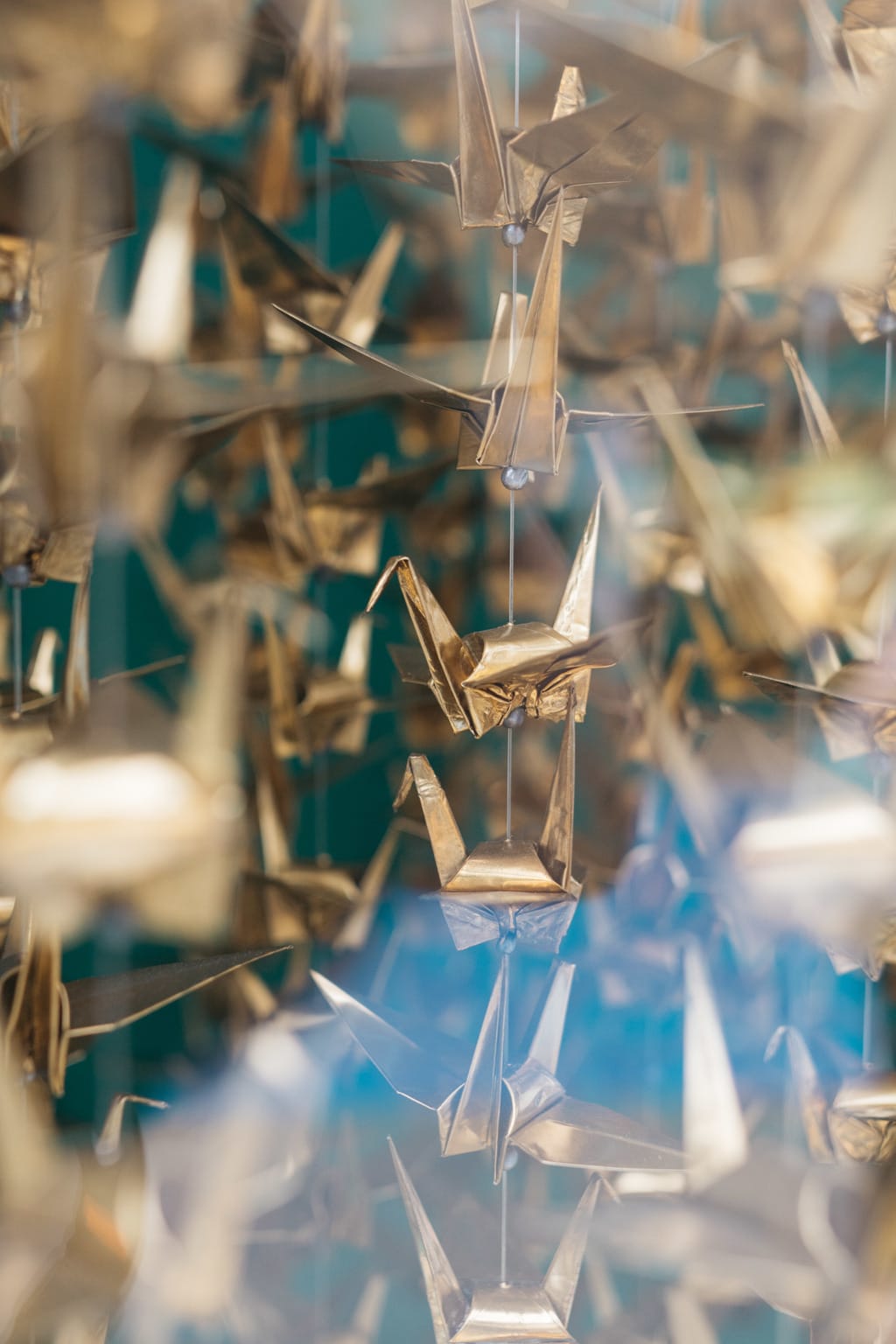
An installation inside the Nagasaki Atomic Bomb Museum. Photo by Robert Kirsch
Day 3: Nagasaki Atomic Bomb Museum & Glover Garden
The Nagasaki Atomic Bomb Museum is a sobering start to the day, but it’s also thoroughly educational and an important reminder of the horror and devastation endured by the city and its people. For a completely different side to Nagasaki’s history, hop on the city tram to Glover Garden, where you can see the house built by Thomas Blake in 1863. Originally from Scotland, Glover contributed to the modernization of Japan through shipbuilding, coal mining and the tea trade. Those who’ve recently watched Martin Scorcese’s film Silence might be interested in reading about the “hidden Christian sites” in the region, one of which, Oura Cathedral, is just down the road from Glover’s home. Also, don’t leave without chowing down on Nagasaki’s popular champon noodles.
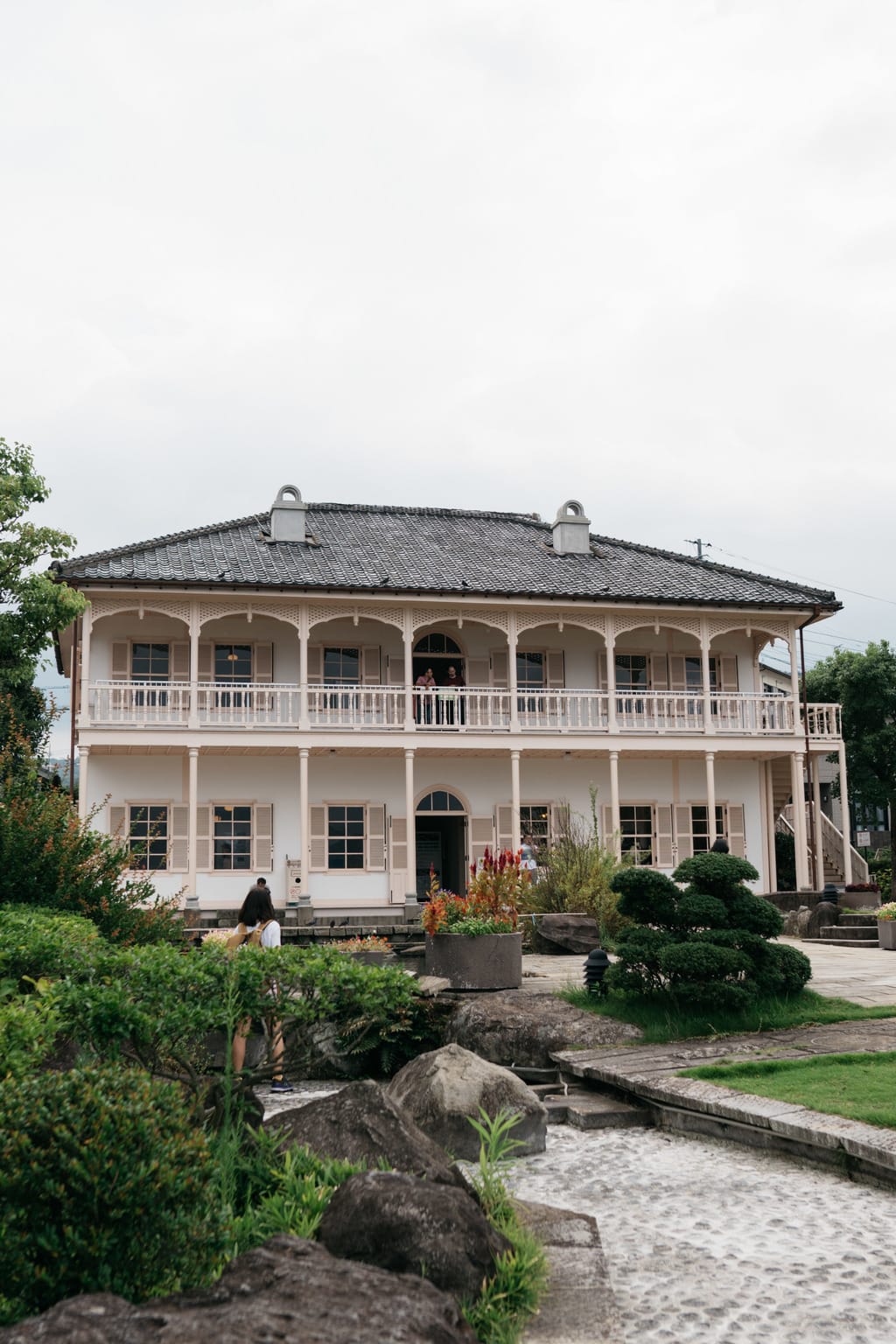
Glover Garden. Photo by Robert Kirsch
How to Get There: If you’re coming from Ureshino, take JR Kyushu’s Limited Express Kamome train from Hizen-Kashima Station to Nagasaki Station, and then navigate your way around the city on the adorable tramway, founded in 1915.
Where to Stay: Huis Ten Bosch theme park is modeled on what the Netherlands looked like in the Middle Ages. There are four hotels, with Henn-na Hotel being the world’s first hotel to feature robot staff. (english.huistenbosch.co.jp)
Getting to and Around Kyushu
The third biggest island of Japan, Kyushu has seven prefectures. Domestic flights from Tokyo’s Narita or Haneda airports take about two hours to any of Kyushu’s airports, but it’s also possible to travel by Shinkansen. Within Kyushu, car rental is best if you’re planning to explore more remote areas, but for the four trips we’ve planned here, you’ll be able to get around mainly on the Kyushu Shinkansen and local trains.
In fact, traveling on JR Kyushu trains is one of the highlights of visiting the island as the company has invested heavily in designing unique and luxurious trains, making the journey between prefectures a real pleasure. Aside from hopping on the Shinkansen, you might also want to take a look at some of the resort trains on offer, such as the Yufuin no Mori, which boasts a lounge with wooden interior, and the A-TRAIN, which features wood and stained glass décor. For more information about the JR Kyushu Rail Pass, and the different trains, visit www.jrkyushu.co.jp/english/.
Words by Annemarie Luck and Matt Schley
Sponsored Post

